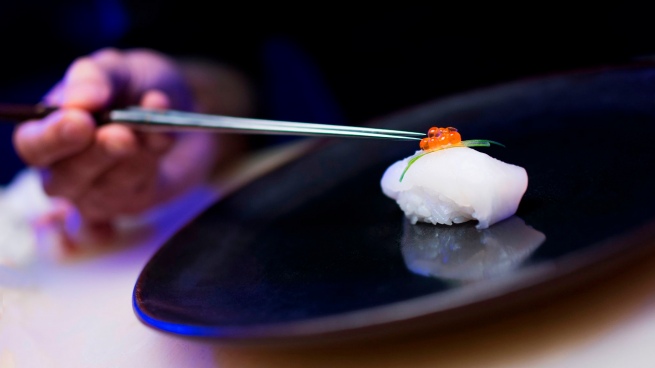Lorena Nonaka is the granddaughter of Japanese parents but, as a good Nikkei, she carries Japanese culture in her blood. She directs the La Grulla restaurant in the Buenos Aires city of Chascomús and is a member of the Japanese Gastro Club, a group of gastronomy from that origin that was created in 2018 to lower costs by buying in quantity. In addition, for four years he has organized the Gastro Japanese Food Week 2022 which begins this Wednesday 7th and runs until September 14th.
At the request of Télam, Nonaka chose the dishes and desserts that must be tried – yes or yes – at the event that brings together more than 50 restaurants from all over the country and will have special promotions, native Japanese products and menus made with the adaptation of its traditions to the fruits of the land and the sea in Argentina, which can be tasted both in person and by delivery.

This year the meeting has as its motto “okawari”. “This is the name given to the gesture of good manners that one performs when one wishes to repeat a plate of food, drink or dessert,” says Nonaka and hopes that it will become an omen and, at the same time, a way of introducing Argentine diners in the flavors of Japan.
Here is a guide from the chef so you don’t get lost and know how to choose when sitting at the table:
Main courses
Sushi Rice rolls seasoned with vinegar and various ingredients such as salmon, kani kama, tuna, avocado and cheese are the most popular delicacy of Japanese food. The sushi It has been adapted both to taste and to Argentine products since it is not only made with salmon but also with trout and other fish from our maritime fauna. “Besides, if it’s done well, it’s also without TACCso it can also be enjoyed by those who are celiac”, says the chef.

Shashimi The traditional Japanese raw fish made up of pieces of three or four varieties of fish: smooth, grouper, sea bream, sea bass, trout and salmon. On this date it is not possible to shashimi but in November the lemon fish is added.
Ramen Its “fast food” version is available in any supermarket, but the original recipe is based on a thick long-cooking broth with very thin noodles. “Now that superfoods are in fashion, the ramen it is a great source of energy because it contains collagen, since it is made by boiling bones for a long time, between 24 and 48 hours”, argues Nonaka.
udon It is also a broth but the udon is translucent and accompanied by thicker noodles than ramen.
kare It is the Japanese version of the traditional curry created by the English in their colonies. “The spice mixture was born in India but the English took it to England and from there it returned to Japan. In this edition we have it thanks to Jetro (Japan External Trade Organization, an organization that promotes products of that origin abroad) we have kare in powder like traditional curry but also in bars that are served with rice and other products such as chicken”, Nonaka advances and assures that this will be one of the great novelties of the event.
teppanyaki One of the most attractive dishes of Japanese cuisine. “The teppanyak consists of rice and fish or other products cooked on a griddle,” defines the chef.
Donburi “It bears the name of the little bowl where the food is served –donburi– and consists of a portion of rice as a base on which vegetables or meat go.

Katsudon “It is the most popular donburi in Japan. The katsudon It consists of a bowl of rice covered with a battered pork chop, scrambled egg and condiments, but in all cases, for those who prefer it, there are vegan or vegetarian options”, he describes.
In the hands of the chef and the barman
Nonaka says that during the Japanese cuisine promotion week, some restaurants will offer a mode of service that is popularly known as “bar kitchen”.
“Is named omakase and comes from the Japanese expression that translates as ‘I leave it to you’. It consists of a bar behind which is a chef who cooks the best he knows with the fresh products of the day. There is no menu or letter, only trust between the diner and the cook”, anticipates the cook.

At the same time, the Japo Food Week will also put emphasis on the spread of Japanese drinks and cocktails. There will be sake-based drinks and Japanese whiskey, various beers and spirits, a product of rice fermentation. All can be combined with traditional cocktails.
at dessert time
Those who have tried Japanese desserts highlight their sweetness and originality. Nonaka warns that the description of “bean paste” is not enough to describe the exquisite flavor of Japanese pastries. These are her favourites:
Tayaki The most colorful of Japanese sweetness: “The tayaki It is a fish-shaped waffle stuffed with anko, the aduki bean, or, in more intercultural versions, with dulce de leche or chocolate”, describes the chef.
Nerikiri A variety of mochi with white bean paste and rice flour that is molded into various shapes.
Wagashi It is a rice flour cake that is made with white beans and fruit.

“Only for Japan Food Week will a delivery be sold umami sweet food, a box made up of a variety of Japanese sweets to try them all”, promises Nonaka, who anticipates that, after this week of promotion with the more than 60 members of the Japanese Gastro Club, fairs and “missions” are proposed to flood the four cardinal points of the country.


















